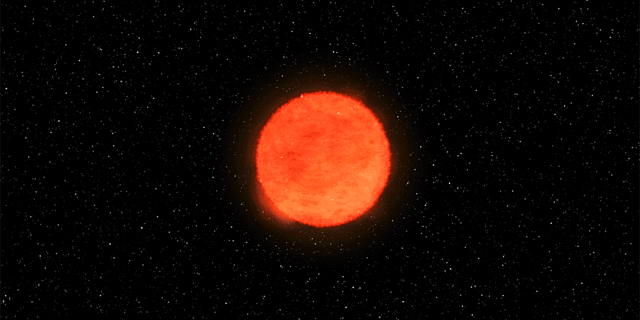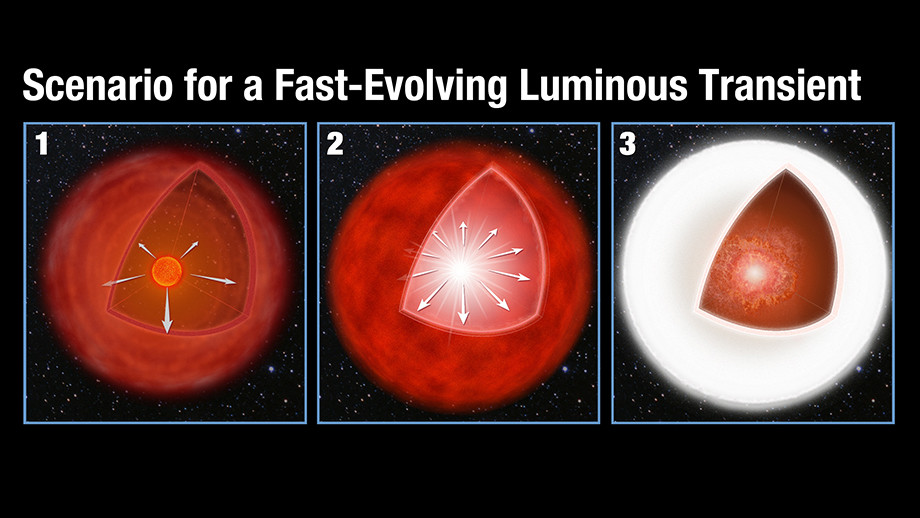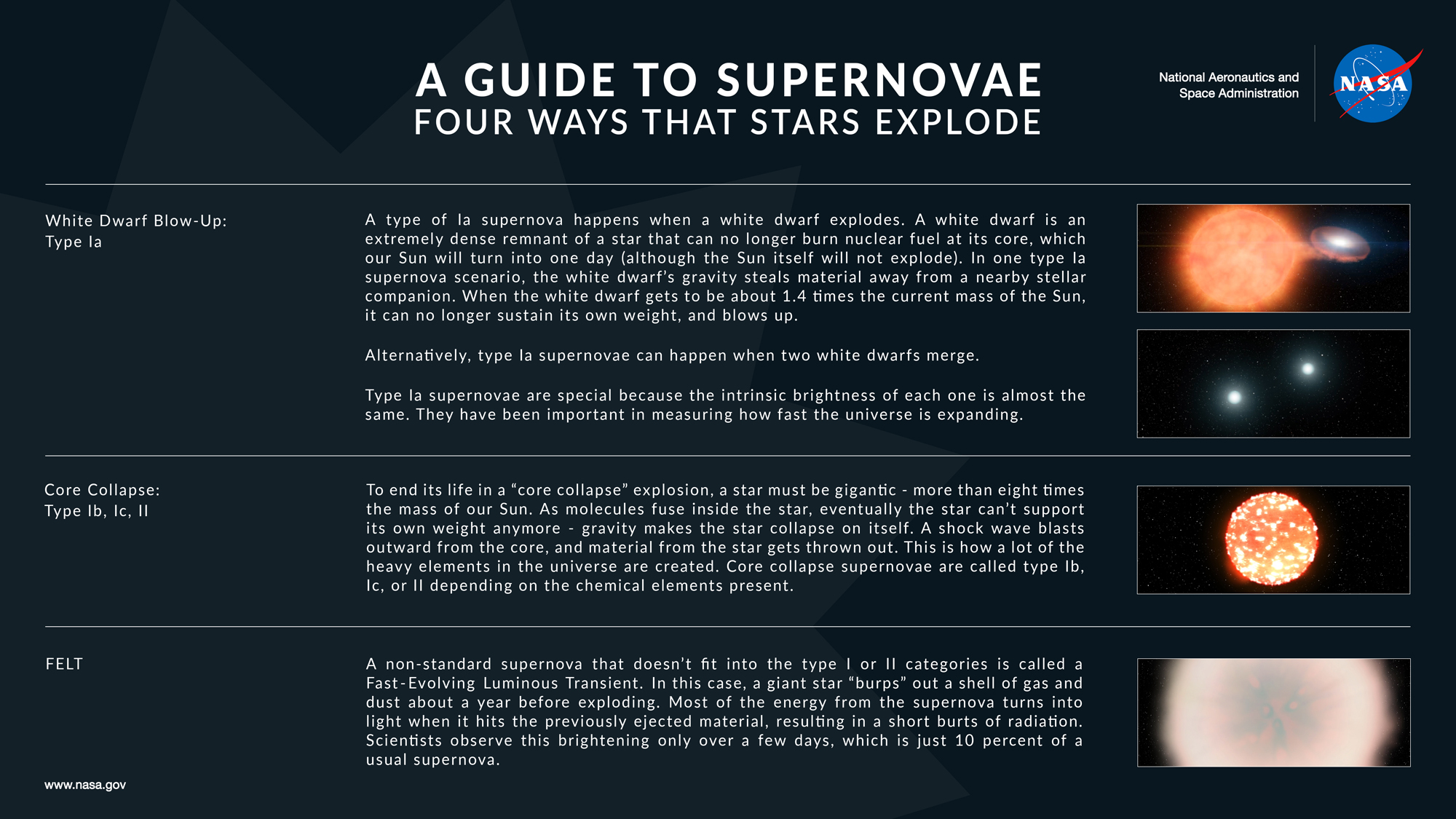In Rare Supernova, Cocooned Star Dies Super-Rapid Death
NASA's Kepler space telescope captured a dying star's final moments, revealing a violent explosion unlike any other supernova.
A new study from the Australian National University (ANU) examines the death throes of the star, which was cocooned inside a dense shell of gas and dust. As a massive star nears the end of its life, a bright explosion expels stellar material into space, in what is known as a supernova.
In this case, when the massive amounts of energy released from the cocooned star slammed into the shell of gas and dust, nearly all the kinetic energy was immediately converted to light. The star's demise lasted only a few days, so its death was about 10 times faster than that of a typical supernova, according to a statement from ANU. [Supernova Photos: Great Images of Star Explosions]
"We've discovered yet another way that stars die and distribute material back into space," Brad Tucker, a researcher from the ANU Research School of Astronomy and Astrophysics, said in the statement.

This kind of speedy supernova is a rare event known as a fast-evolving luminous transient (FELT). Due to the brief duration of these events, astronomers know little about FELTs, compared to traditional supernovas.
The Kepler space telescope is designed to hunt for exoplanets outside our solar system. The instrument detects these exoplanets by watching for stars dimming as planets pass in front of them. Astronomers have also used Kepler to find black holes, supernovas and other explosions in space.
Traditional supernova models do not easily explain the rapid evolution of FELTs. However, the Kepler space telescope can make precise measurements of sudden changes in starlight, allowing astronomers to create a new model for FELTs, according to the new study's statement.
Get the Space.com Newsletter
Breaking space news, the latest updates on rocket launches, skywatching events and more!
The new findings suggest that FELTs represent "a new kind of supernova that gets a brief turbo boost in brightness from its surroundings," said the study, published March 26 in the journal Nature Astronomy.

"Using Kepler's high-speed light-measuring capabilities, we've been able to see this exotic star-explosion in incredible detail," Tucker said. "With the imminent launch of NASA's new space telescope, TESS, we hope to find even more of these rare and violent explosions."
The new work sheds light on the different life cycles of stars, as well as how violent explosions like this one may affect planets orbiting those stars. Tucker said in the statement.

Follow Samantha Mathewson @Sam_Ashley13. Follow us @Spacedotcom, Facebook and Google+. Original article on Space.com.
Join our Space Forums to keep talking space on the latest missions, night sky and more! And if you have a news tip, correction or comment, let us know at: community@space.com.

Samantha Mathewson joined Space.com as an intern in the summer of 2016. She received a B.A. in Journalism and Environmental Science at the University of New Haven, in Connecticut. Previously, her work has been published in Nature World News. When not writing or reading about science, Samantha enjoys traveling to new places and taking photos! You can follow her on Twitter @Sam_Ashley13.









